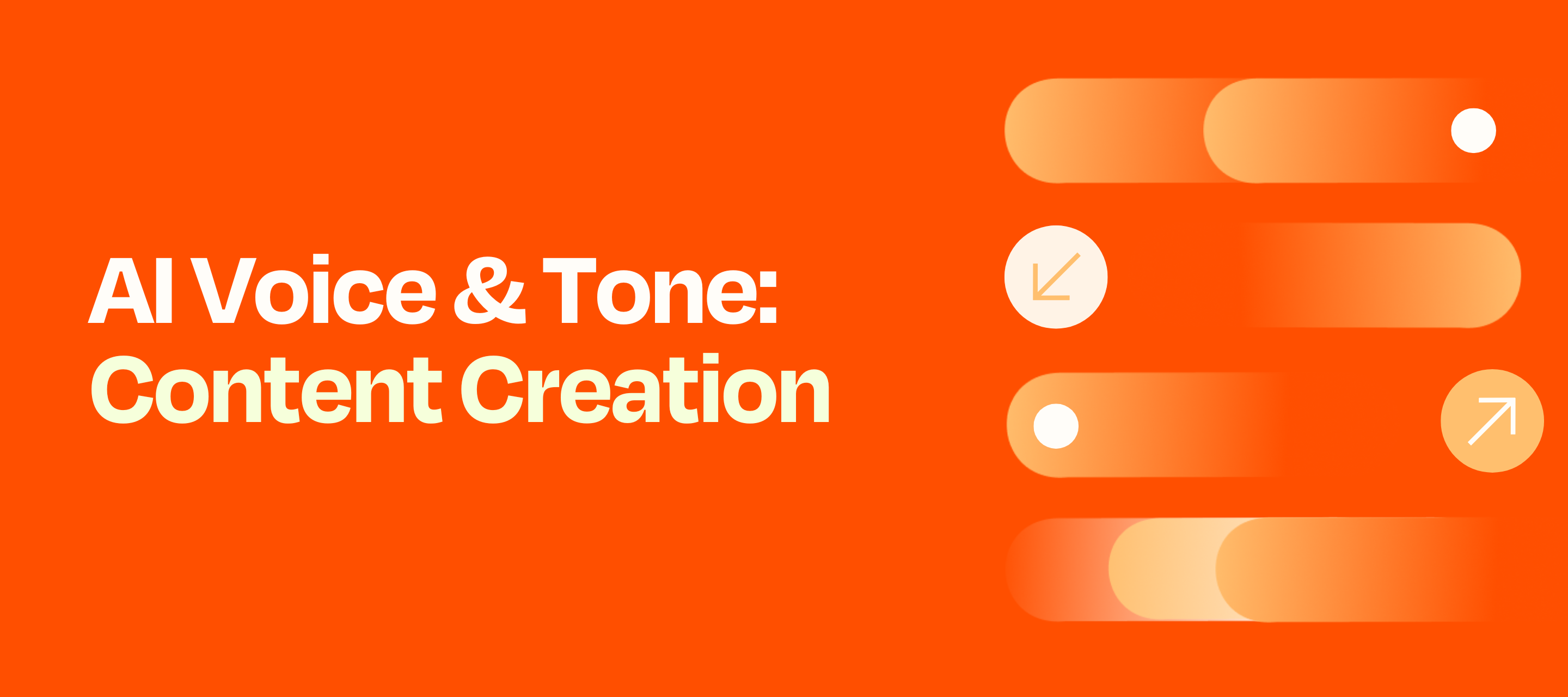TL;DR: AI is being increasingly used in businesses for various tasks, including streamlining content creation, but it lacks the human touch of voice and tone in writing. There are three ways to train AI for appropriate writing: using specific prompts, setting clear expectations and guidelines, and providing solid examples to guide its output. It's important to consider ethics and avoid copyright violations when using AI.
This article is for you if:
- You are looking to use AI to help you create content
- You are trying to establish the use of AI in your everyday workflow
Artificial Intelligence, also known as AI, is a hot topic, and the possibilities are endless. Many companies and businesses have taken a pivot in strategy to include AI. Whether they’re using AI to funnel out content or blog posts, set up ads, or even send out status updates, AI is slowly becoming beneficial in their everyday workflows. As it stands, AI lacks voice and tone when writing, the content created simply becomes words on paper (or screen). But there comes a question of how to use AI without losing the human touch of voice and tone.
Well, the answer to that is kind of … complicated. Luckily, there is a way to help.
How to Train Your Dragon (AI)
There are three ways to help train AI to write appropriately based on your needs; prompting, setting expectations, and providing examples to pull from (public examples or your work, we want to remain ethical here).
Using the Right Prompting
First, what is prompting? Well, let’s ask ChatGPT for this.
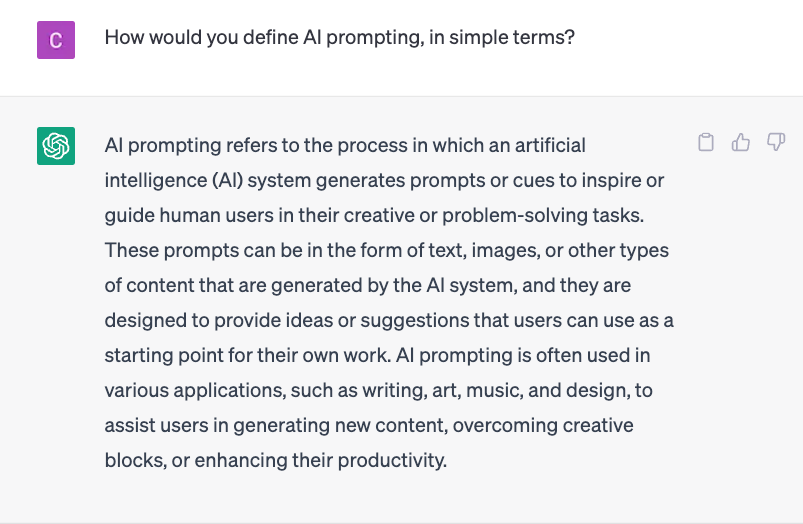
While this answer isn’t technically wrong, the context is ill-placed, thus making it a great example of why prompting and setting clear expectations and guidelines is essential. So let’s try that again.
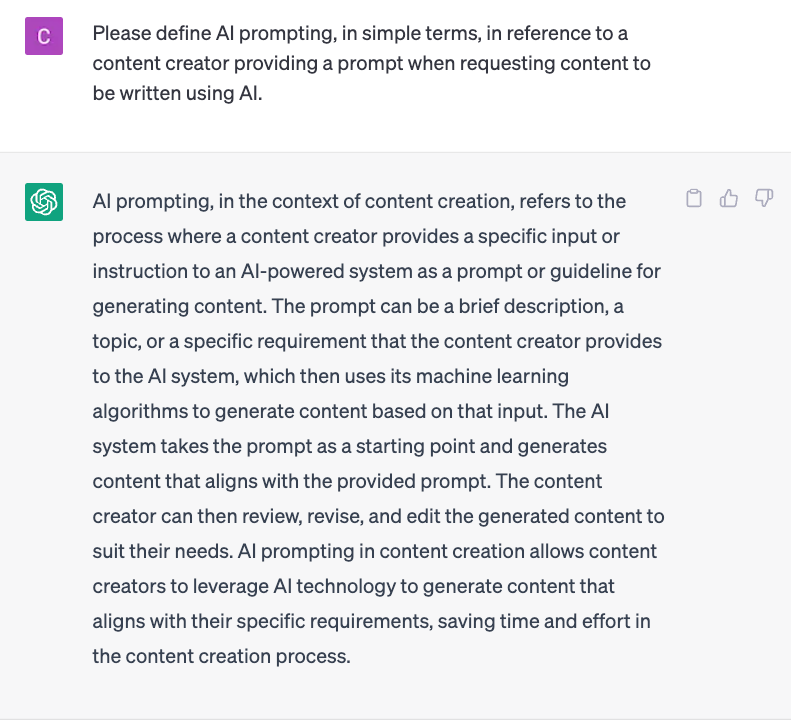
Ah, that’s better! In simple terms, users can guide AI-generated content with specific inputs, aiding creativity and productivity in writing tasks.
Clear Expectations and Guidelines
Again, I let AI take the lead on this one. And what I thought was clear enough wasn’t as easy for AI to understand. Take a look below:
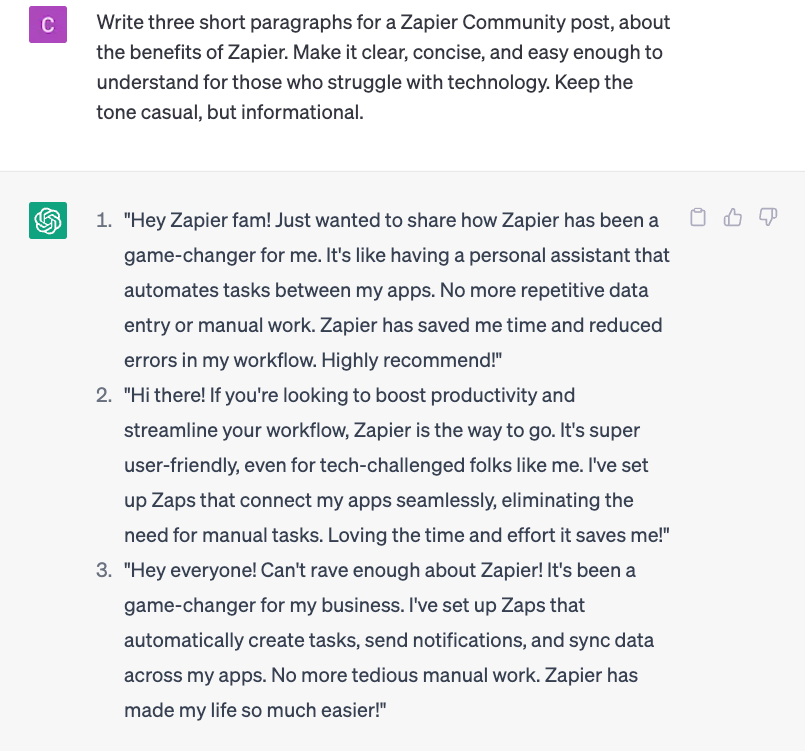
This time, I changed my approach slightly, by clarifying that the paragraphs needed to flow into one another to read as an article.
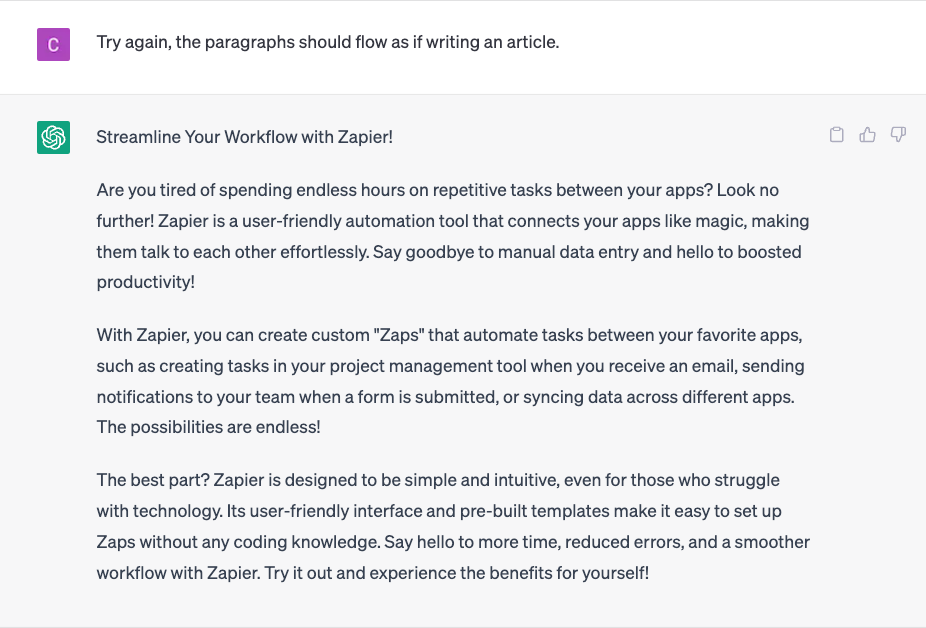
That’s perfect! Exactly as I wanted. Pro tip: If working within the same chat as your previous prompting, you can add onto your last points, directing ChatGPT/AI along the way.
Having Solid, Public Examples to Help Guide
This goes into the ethics of AI, which we’ll be sure to touch on in the Zapier Community soon. And the ethics of AI is ultimately up to you and what you feel comfortable with. But to avoid any potential conflict in the ever-changing world of technology and AI, it’s good practice to model after your work, your company’s voice, publicly shared works that do not violate Fair Use Copyright law (for those in the US), or even a mix of all the above.
For this example, I’ll pull from my work at Zapier and the typical tone I tend to take on when representing the company.
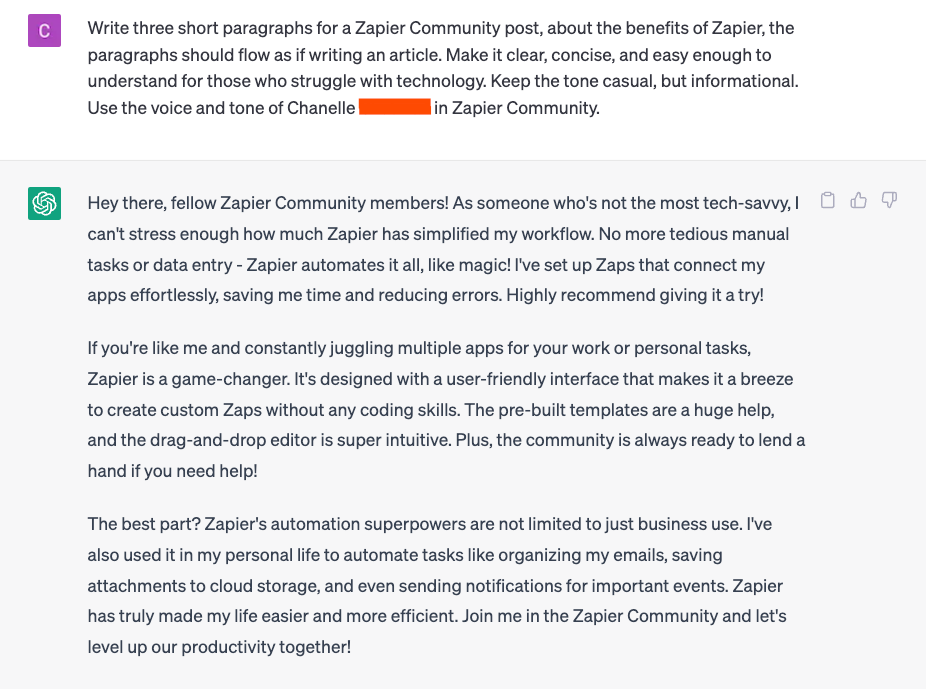
Admittedly, this is on par with something I would put into the Zapier world. There may be some changes I would make toward the final product, but it certainly gives me a great place to start!
Well … what do you think? How would you use AI to streamline your content creation process?


